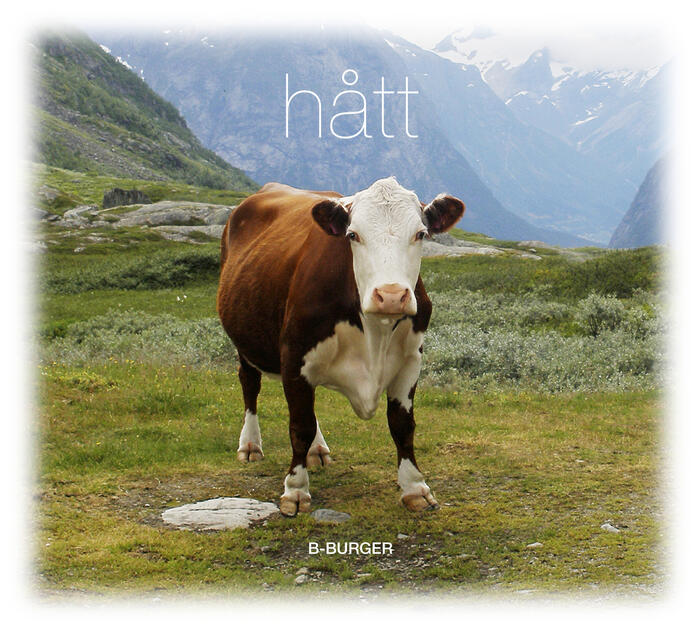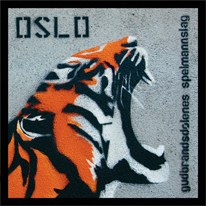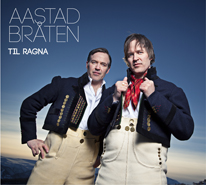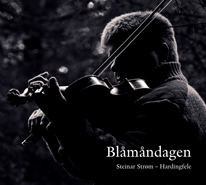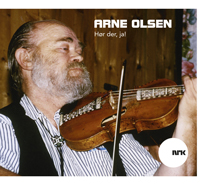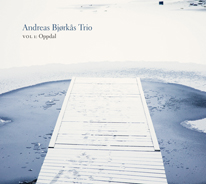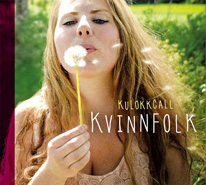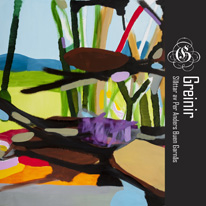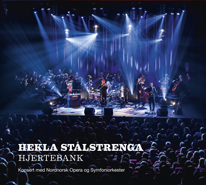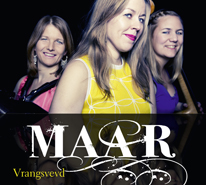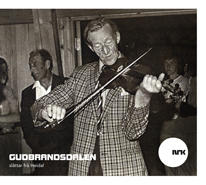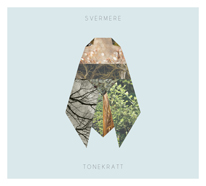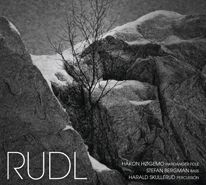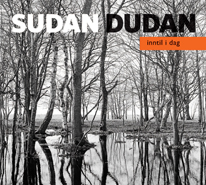Bak kvar sving skjuler det seg melodiske perler og under ligg sugande danserytmar. Dette svingar som gamaldans ikkje har gjort på 70 år!
Nils Øyvind Bergset (trekkspel) / Per Anders Buen Garnås (hardingfele) / Anders E. Røine (gitar) Tre av landets fremste folkemusikarar bles liv i ei lite påakta musikkform, og gjer det på gamlemåten. Gruppa Hått har plukka fram gamaldansslåtter på hardingfele frå Telemark, Numedal og Valdres - slåttar som var i ferd med å gå i gløymeboka.
Dei gjer no ut slåttane på CD-en ”B-burger”.
Hardanger fiddle round dance music
Round dances and the associated music spread throughout the rural communities towards the end of the 18th century. The waltz was the first to arrive, and quickly became very popular. It was followed shortly after by various forms of polka. The mazurka appeared around 1850, and the reinlender a decade later. The new tunes were quickly adapted to existing instruments, such as the Hardanger fiddle. Later on, new instruments were introduced, such as the diatonic (around 1840) and chromatic (from 1900 onwards) accordion. BUY / LISTEN
The new tunes were performed in the same playing style as the older, rural dance tunes, and there were probably instances of gangar tunes being played with a reinlender rhythm. The influence was discernible in the use of old-style tonalities, bowing techniques, melodic lines and embellishments. Later on, the tunes attained a standardized, modern soundcharacter, but Hått’s performances are entirely in the old style.
The waltz and reinlender were the most popular forms. The existing round dance legacy from Numedal numbers 62 different recorded waltzes, 51 reinlenders, 20 polkas and 17 mazurkas. More than 6500 round dance pieces from Numedal have been archived. It is likely that the waltz came to Numedal early in the 19th century at the time of Løytnantsdrengene: Pål (1786–1867), Halvor (1789–1845), Gunnar (1798–1888) and Torstein (1805–1887). Eivind Spelemann (1830–1883) is said to have been among the first to play the reinlender. Knut Nordland (1794–1877) is thought to have been one of the first to play round dances in Valdres. From Telemark it is known that both Gamle-Hans Fykerud (1823–1879) and his sons Lars (1860–1902) and Vesle-Hans (1862–1942) played round dance tunes. Other round dances can be traced back to Tomas Lurås (1799–1886).
New tunes were picked up at fairs and on travels; some were brought by visiting fiddlers. Fant-Karl’s waltzes were widespread. His real name was Karl Johansen Rosenberg (circa 1775–1855); it is known that he traveled around in Numedal and Telemark between 1825 and 1844. He probably died in Valdres. The round dances were at the height of their popularity between 1870 and 1920. The primary exponents of round dance music at this time were Lars Fykerud and Anders Ødegarden (1871–1943) in Telemark and Numedal; Ulrik i Jensestogun (1850–1919) in Valdres, said to have had 300 waltzes in his repertoire; and Ola Mosafinn (1828–1912), Sjur Helgeland (1858–1924) and Nils Tjoflot (1865–1989) in Western Norway. In the heyday of the round dances, many fiddlers travelled far and wide to play at concerts and dances, often bringing tunes home from the United States. Asmund Buen (1869–1935) spent the 1890s in America as a cowboy and acquainted himself with a number of American and British musicians. Anders Ødegaarden stayed in the United States for three periods.
At the height of Norwegian nationalism in the latter half of the 19th century, the Hardanger fiddle and the music associated with it came to be regarded as something of a national symbol. Many Hardanger fiddlers viewed the growing popularity of the chromatic accordion and contemporary dances such as the tango, foxtrot, one-step and charleston as a threat to their own status and what they had begun to refer to as the ‘old national music’. The Numedal fiddlers’ society was formed in 1933, with Tov Flatin (1878–1945) as chairman. In a letter to Arne Bjørndal, then chairman of the Norwegian National Association for Traditional Music and Dance, he described the society’s purpose: ‘First and foremost, the society should attempt to lessen the accordion’s grip on festive occasions throughout the rural communities, and to strive to run it out of the valley and back where it came from... The fiddlers must join together and play at events and gatherings to keep the accordion out, as it represents the greatest threat to traditional music today.’ Flatin insisted that fiddlers should form groups to play at dance gatherings and discreetly include old tunes to ensure their continued existence. Bjørndal replied: ‘I think a tight fiddlers’ group with a repertoire of good, rhythmically strong tunes is likely to become quite popular. The tunes should be in the old style: springar, halling, gangar and reinlender, old waltzes, mazurkas, polkas and older figure dances. Jazz on the Hardanger fiddle should be banned outright...
Such groups would further the cause of fiddle playing in the communities… And most importantly, it might keep the accordion at bay.’
Throughout Numedal and Valdres, Hardanger fiddle round dances were widespread, often played in groups. Our main sources from Numedal are Anders Ødegaarden, Steingrim Haukjem (1898–1968), and Hellik Juveli (1897–1986). From Valdres, we have included tunes after Knut Trøen (b. 1932) and Harald Fylken (1910–1963). In Telemark, round dance tunes seem to have been in less demand. Myllarguten was critical of the round dances, rejecting them as ‘urban’ music. Some of the Hardanger fiddlers preferred West Norwegian round dances over Telemark tunes. Even so, we have several sources of traditional round dance tunes. In the Buen family, tunes have passed from Asmund Buen to his son Anders Buen (1910–1977) and on to his sons Hauk (b. 1933) and Knut Buen (b. 1948). Tunes after Lars Fykerud have been passed on by Kristiane Lund (1889–1976) and Einar Løndal (1914–2006), among others. Olav Flåto (1914–2000) has his own tradition. Knut Dahle (1834–1921) from Tinn passed on a number of round dances to his grandchildren Johannes (1890–1980) and Gunnar Dahle (1902–1988). Gunnar Dahle also composed round dances of his own. Attitudes toward the round dances changed after W.W.II. An upsurge in interest during the 1960’s became a national success, particularly in areas dominated by ordinary fiddle, where groups of fiddle, accordion, guitar and bass became common. Household names from this era are Oddvar Nygaard and Ola Opheim; Sven Nyhus, Hilmar Aleksandersen and P.A. Røstad; Bjarne Lien and Asmund Bjørken. Other Hardanger fiddlers to release recordings of round dance tunes include Sigbjørn Bernhoft Osa, Torleiv Bolstad and Anders Kjerland. Even in the Hardanger fiddle territories, accordionists would adapt Hardanger fiddle tunes and form groups, among them Oddvar Stegegjerdet, Sogn and Tov Haukjem, Numedal. From the late 1970s and well into the 1980s, Hardanger fiddle-based combos such as Knut Halvards and Hesjevoll & Myklemyr were very popular. Indre Sunnfjord Spelemannslag, Naustedalen Spelemannslag, Marylands and Honndalstausene are fiddlers’ groups with substantial catalogues of Hardanger fiddle round dance recordings. The function of the guitar has changed perceptibly over the years. One of the first combos to utilize guitar was Ottar E. Akres Trio in the 1930s. Their guitarist, Oscar Skau, mostly played melodic lines. Since then, guitar parts have been reduced to chords on the afterbeat.
Over a span of 200 years, then, round dance music has evolved from solo performance to combos and fiddlers’ groups. And then Hått was formed in 1997 as a duo (Per Anders and Øyvind). Anders joined in 1999.


